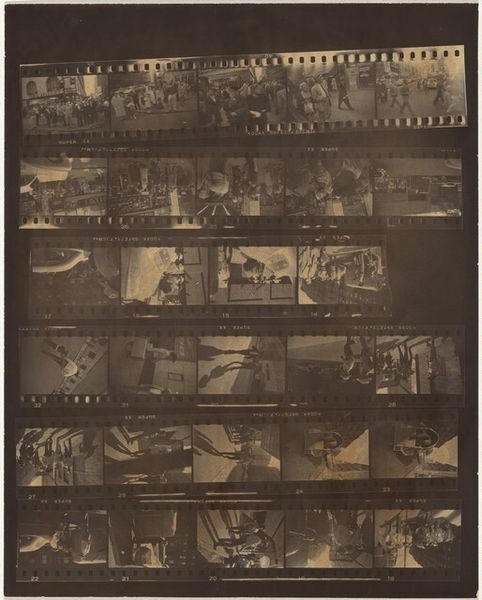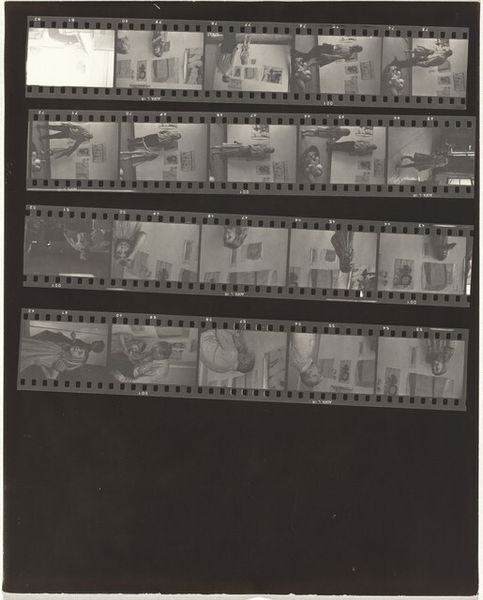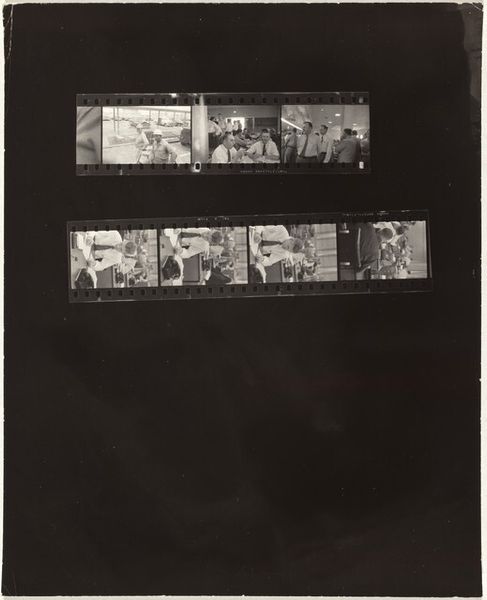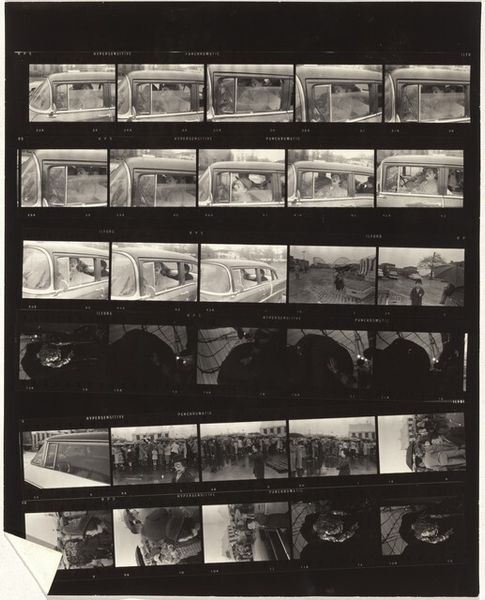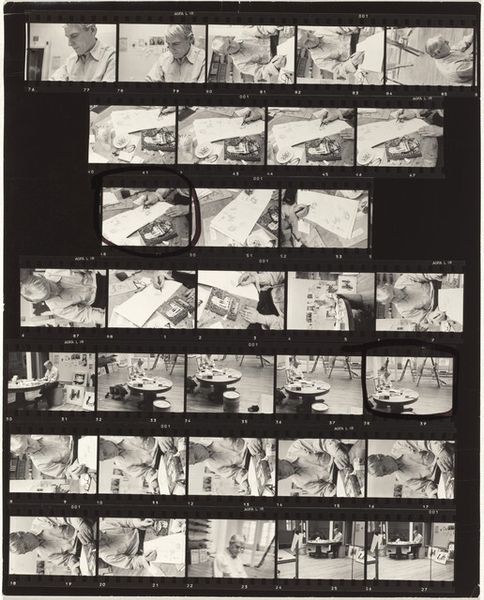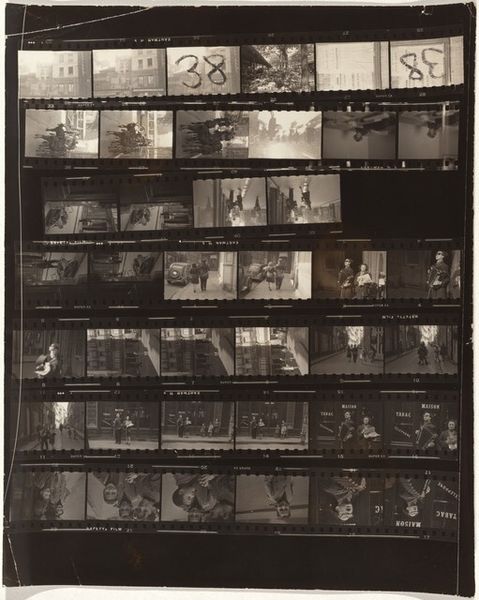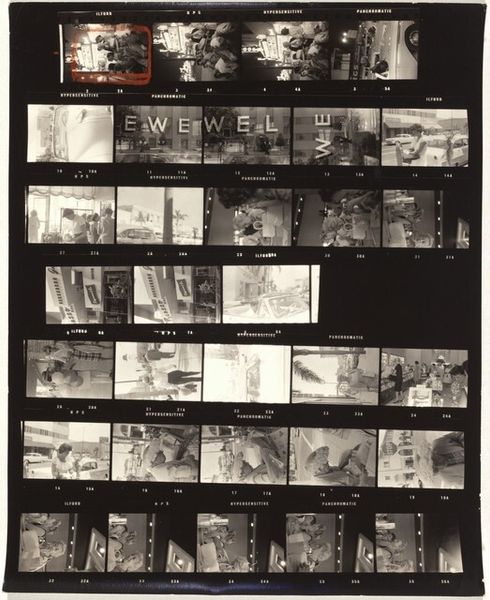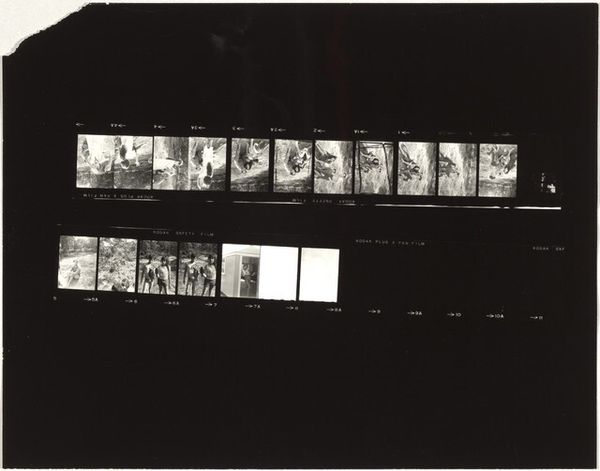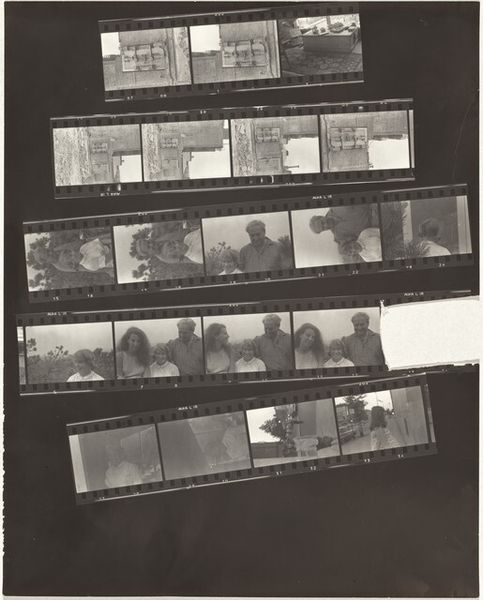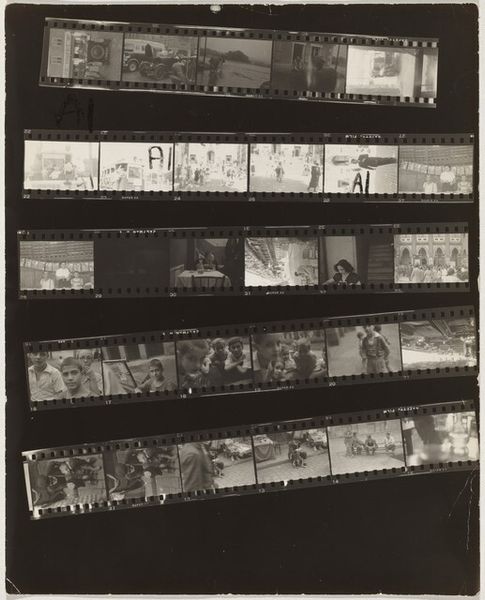
contact-print, photography
#
contact-print
#
street-photography
#
photography
#
modernism
#
realism
Dimensions: sheet: 20.2 x 25.2 cm (7 15/16 x 9 15/16 in.)
Copyright: National Gallery of Art: CC0 1.0
Curator: It's like looking at a painter's palette, isn't it? Here we have Robert Frank’s “New York City no number” from 1957. It’s a contact print, rows of images, film strip still intact. Raw, like straight from the darkroom, no fuss. What's your first reaction? Editor: It feels architectural, almost scientific. Rows of meticulous frames that highlight the sterility of order. And what does that order reveal? What are these sequential photos saying to us? It definitely feels like a deconstruction of something. Curator: You got it. Frank often stripped back those rosy-cheeked portraits of the American Dream we were fed at the time. These sequences let you see his thinking. I'd wager he felt trapped between what he thought he should show versus what he knew was the truth about race, poverty, and disillusionment. Editor: Definitely, the lack of people in some frames and then this grand beaux-arts style architecture reminds me of class disparity. Frank was Swiss; an outsider maybe peering at the cold architecture that represents institutional power. Were all allowed inside the architecture, literally or figuratively? Curator: Beautifully said. Frank was all about disrupting narratives. You can feel it in this modernist sensibility, right? The blurring of boundaries. He made something revealing just by showing the edges. In this instance it shows us his proof-sheets, which are his "sculptures". The unedited versions are full of possibility. Editor: Absolutely. What I’m feeling looking at it, from the contact print of Frank, is the process of deciding what images tell a story or can construct a more truthful reality than is usually allowed. This is important, considering his book The Americans was highly criticised at the time. But here, he takes control through process! It shows that activism can arise even from mundane routines like printing photos. Curator: Yes! I like your analysis and I hadn’t actually thought about it that way, his mundane act of doing showing us the other side of the American dream, the other reality. I never feel like he’s condemning his subjects. I do feel like he is presenting questions that maybe even he cannot answer. He certainly challenged himself! Editor: It becomes about the questions, and that's a truly powerful stance. It reminds us that progress isn't about simple answers but a commitment to continuous, critical dialogue, even now. Thank you for guiding me through the questions!
Comments
No comments
Be the first to comment and join the conversation on the ultimate creative platform.

